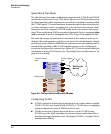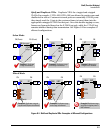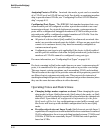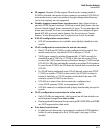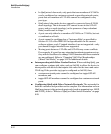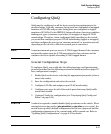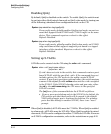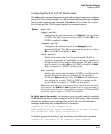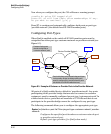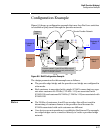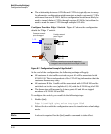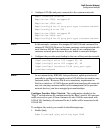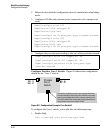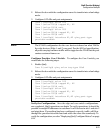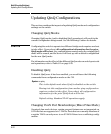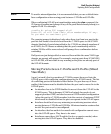
QinQ (Provider Bridging)
Configuring QinQ
Now when you configure the port, the CLI will issue a warning prompt:
<config #> svlan 200 tagged a1,a2
Ports a1, a2 will lose their cvlan memberships if any.
Do you want to continue? [y/n] y
Press [Y] to continue and automatically configure both ports as port-type
‘provider-network’ (the default for all S-VLAN member ports).
Configuring Port-Types
When QinQ is enabled on the switch all S-VLAN member ports must be
categorized as either port-type customer-network or provider-network (see
Figure 8-5).
Customer facing ports
must be configured as
‘customer-network’ ports
Customer
Provider
Edge Switch
Provider
Core Switch
Device
Service Provider Network
Ports inside the provider network that participate
in the provider bridge (including uplink ports)
must be configured as ‘provider-network’ ports
(the default for all QinQ enabled devices)
Figure 8-5. Example of Customer or Provider Ports in the Provider Network
All ports of a QinQ enabled device default to ‘provider-network’. Any ports
participating in the provider bridge that are used to connect to customer
equipment, must be manually configured as port-type ‘customer-network’. In
a mixed mode device, ports that are members of C-VLANs and that do not
participate in the provider-bridge cannot be configured to any port-type.
The following command allows you to configure the appropriate port-type.
Syntax: [no] interface <port-list |Trkx> qinq port-type <customer-network | provider-
network>
Configures the specified ports/trunks as a customer network port
or provider network port.
Default: port-type provider (for QinQ svlan mode)
8-16



